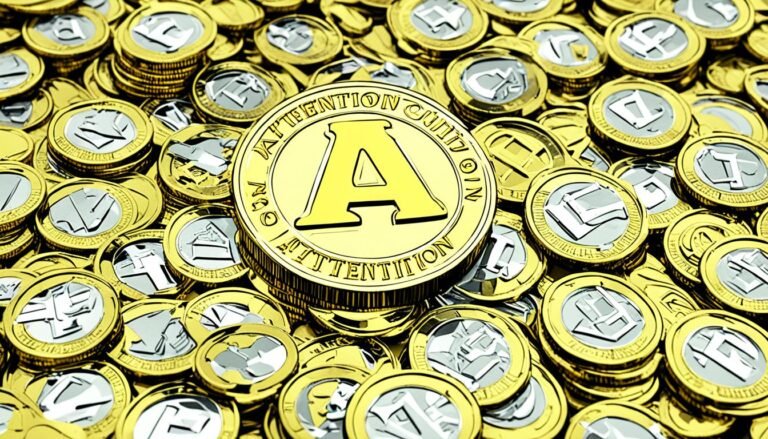Impulse Buying Triggers
They say, 'Out of sight, out of mind.' And that's exactly what retailers want you to forget when it comes to impulse buying triggers.
From the moment you step into a store or browse an online shopping site, numerous tactics are employed to tempt you into making impulsive purchases. Whether it's the power of visual merchandising, the allure of limited-time offers, or the influence of social pressures, the triggers are subtle yet effective.
But what are these triggers exactly? How do they work? And why are they so difficult to resist?
In this discussion, we will explore the fascinating world of impulse buying triggers and uncover the secrets behind our impulsive spending habits.
Key Takeaways
- Visual merchandising and sensory marketing techniques play a crucial role in influencing impulse buying behavior.
- Limited-time offers, discounts, and the fear of missing out (FOMO) create a sense of urgency and tap into consumers' desire for savings and exclusivity.
- Social influences and peer pressure affect consumer behavior, leading to impulsive buying decisions as individuals seek validation and fit in with their peers.
- Emotional triggers, such as exploiting vulnerabilities and creating a sense of urgency, manipulate buying behavior and drive impulsive purchases.
The Power of Visual Merchandising
Visual merchandising is a powerful tool that actively engages customers and influences their buying decisions. In today's competitive retail environment, it's essential for businesses to create visually appealing in-store displays that captivate the attention of customers and entice them to make purchases. Research has shown that sensory marketing, which incorporates sight, sound, smell, touch, and taste, can have a significant impact on consumer behavior.
In-store displays play a crucial role in sensory marketing. By strategically arranging products, using attractive colors, and creating visually compelling layouts, retailers can create an immersive shopping experience that stimulates multiple senses. For example, a clothing store may arrange mannequins in eye-catching poses, showcasing the latest fashion trends, while a bakery may display freshly baked goods near the entrance, filling the air with the irresistible aroma of pastries.
These visual merchandising techniques not only grab customers' attention but also evoke positive emotions and associations, leading to increased sales. Studies have shown that well-executed in-store displays can make customers feel more inclined to make impulsive purchases. By creating an environment that appeals to their senses, retailers can create a sense of urgency and excitement, encouraging customers to buy products they may not have initially planned to purchase.
Limited-Time Offers and Discounts
Limited-time offers and discounts are powerful marketing strategies that can effectively drive impulse buying behavior in customers. When it comes to pricing strategies, limited-time offers create a sense of urgency and scarcity, making customers feel like they need to take advantage of the deal before it's gone. By offering discounts, businesses can tap into consumers' desire for savings and the feeling of getting a good deal. This can trigger the impulse to make a purchase, even if the item wasn't initially on their shopping list.
Consumer behavior analysis reveals that limited-time offers and discounts can tap into psychological factors that influence purchasing decisions. Here are two key insights:
- Fear of missing out (FOMO): Limited-time offers create a fear of missing out on a great deal. When consumers see a time-limited discount, they worry that they might regret not taking advantage of it. This fear can push them to make impulsive purchases.
- Perceived value: Discounts make customers feel like they're getting more value for their money. When presented with a limited-time offer, consumers perceive the discounted price as a better value compared to the regular price. This perception of value can lead to impulsive buying behavior.
Social Influences and Peer Pressure
Social influences and peer pressure play a significant role in shaping consumer behavior and can often lead to impulsive buying decisions. As social beings, humans have an inherent desire to conform to the norms and expectations of their social group. This social conformity can manifest in various ways, including the purchasing decisions we make.
Peer influence, in particular, can be a powerful force when it comes to impulse buying. We often look to our peers for validation and seek their approval in our choices. This can lead us to make impulsive purchases in order to fit in or be perceived as part of a certain social group. We may feel compelled to buy the latest trendy item or follow the crowd's purchasing patterns, even if it goes against our better judgment or financial capabilities.
Marketers and advertisers are well aware of the impact of social influences and peer pressure on consumer behavior. They strategically use social conformity as a persuasive tactic in their advertising campaigns. By showcasing how popular and accepted their products are among certain social groups, they create a sense of FOMO (fear of missing out) and a desire to conform.
Understanding the influence of social conformity and peer influence can help individuals become more aware of their own buying behaviors. By questioning the motives behind their purchases and considering whether they're buying for themselves or to fit in, individuals can make more informed and intentional buying decisions.
Emotional Triggers and Impulse Buying
When it comes to impulse buying, emotional triggers play a significant role in influencing your purchasing decisions. These triggers tap into your psychology and affect your emotional response to buying.
Marketers are well-aware of this and use various techniques to create these emotional triggers and manipulate your buying behavior. Understanding the psychological impact of triggers, the emotional response to buying, and the influence of marketing techniques can help you make more informed choices and resist impulse buying.
Psychological Impact of Triggers
Emotional triggers play a significant role in influencing impulse buying behavior, compelling individuals to make spontaneous purchases driven by their immediate feelings and desires. These psychological triggers tap into our deepest emotions and manipulate our decision-making process, often leading us to make impulsive choices without rational thought.
Understanding the psychological impact of triggers is essential in recognizing how our emotions can be manipulated to drive impulse buying.
To convey a deeper meaning for the audience, consider the following nested bullet point list:
- Emotional triggers exploit our vulnerabilities:
- They target our insecurities and fears, making us believe that purchasing a certain product will solve our problems or make us feel better about ourselves.
- They create a sense of urgency, making us feel that we must act quickly to seize an opportunity or avoid missing out on something desirable.
Emotional Response to Buying
The allure of impulse buying lies in the powerful emotional response it elicits, compelling individuals to make spontaneous purchases driven by their immediate desires. Emotional triggers play a significant role in consumer behavior, as they tap into our deepest desires, fears, and aspirations. These triggers can be categorized into various types, such as scarcity, social proof, and fear of missing out, each designed to create a sense of urgency and excitement. When consumers experience these emotions, they are more likely to give in to impulse buying, disregarding rational decision-making and succumbing to their immediate gratification. However, impulse buying can also lead to cognitive dissonance, a state of internal conflict that arises when our actions contradict our beliefs or values. This dissonance can drive individuals to justify their impulsive purchases, further influencing their buying behavior in the future.
| Emotional Trigger | Description | Example |
|---|---|---|
| Scarcity | Creating a sense of limited availability, making consumers fear missing out on an opportunity or product. | "Limited stock available! Buy now before it's too late!" |
| Social Proof | Influencing consumers by demonstrating that others have already made the purchase, leading to a desire to conform and not miss out on a popular product or trend. | "Join thousands of satisfied customers who bought this!" |
| Fear of Missing Out | Provoking a sense of anxiety or fear that not purchasing the product will result in missing out on a valuable experience or opportunity. | "Don't miss this once-in-a-lifetime chance! Buy now!" |
Influence of Marketing Techniques
Marketing techniques play a crucial role in influencing consumers' impulse buying behavior through the strategic use of emotional triggers. The influence of social media has become increasingly significant in recent years. Companies leverage platforms like Facebook, Instagram, and Twitter to create a sense of urgency or desire for their products.
By using targeted advertisements and sponsored posts, they can reach a wider audience and tap into their subconscious desires. Subconscious marketing techniques, such as subliminal messaging and product placement, also play a key role in influencing impulse buying. These techniques subtly implant ideas and associations in consumers' minds, making them more likely to make impulsive purchases.
It's essential for consumers to be aware of these marketing strategies and develop a critical mindset to make informed purchasing decisions.
The Thrill of the Hunt: Scarcity and FOMO
You're constantly bombarded with limited-time offers and exclusive products, triggering your fear of missing out (FOMO).
This fear drives you to seek out these scarce items, as if it's a thrilling hunt for treasure.
The appeal of owning something rare and exclusive gives you a sense of excitement and satisfaction, making you more likely to impulsively buy.
Limited-Time Offers
Limited-time offers can create a sense of urgency, triggering the thrill of the hunt and playing on our fear of missing out. Marketers have long recognized the power of limited-time offers in driving impulse buying. By setting a deadline, these offers tap into our innate desire for instant gratification and the need to seize opportunities before they disappear.
Urgency marketing is a powerful tool that leverages scarcity to compel consumers to take immediate action. Here's why limited-time offers are so effective:
- Creates a sense of exclusivity: Limited-time offers make customers feel special, as if they've access to something that others don't. This exclusivity increases the perceived value of the product or service.
- Stimulates a fear of missing out (FOMO): The fear of missing out on a great deal or a unique opportunity drives impulsive purchases. Limited-time offers capitalize on this fear, pushing customers to make quick decisions.
Fear of Missing Out
The fear of missing out on exclusive deals and unique opportunities drives impulsive purchases and fuels the thrill of the hunt.
In today's digital age, social media has a significant influence on this fear. With constant access to information, social media platforms have become breeding grounds for FOMO. Seeing others flaunting their latest purchases or experiencing once-in-a-lifetime events creates a sense of urgency and envy, compelling individuals to make impulsive buying decisions.
The fear of missing out becomes amplified when limited-time offers are involved. Scrolling through online feeds, seeing time-limited promotions, and witnessing others jumping on the bandwagon can trigger a sense of urgency that overrides rational thinking. Brands and marketers understand this psychological trigger and capitalize on it by strategically creating a sense of scarcity and exclusivity.
Rare and Exclusive Products
Consumers are driven by a primal desire for rare and exclusive products, fueling a sense of thrill and excitement that overrides rational thinking and leads to impulsive buying decisions. The allure of owning something that few others have can be irresistible, creating a sense of exclusivity and status. This desire for rare and exclusive products taps into our innate need to feel special and unique.
Here are two key reasons why rare and exclusive products trigger impulsive buying:
- Exclusive experiences: Consumers are drawn to products that offer unique and unforgettable experiences. Whether it's a limited edition concert ticket or a once-in-a-lifetime travel package, the promise of an exclusive experience can be incredibly enticing.
- Luxury goods: The appeal of luxury goods lies in their exclusivity and prestige. Owning a luxury item sets you apart from the masses and signifies success and sophistication. The limited availability of these products adds to their allure, making them highly desirable and triggering impulsive purchases.
Impulse Buying and the Role of Advertising
Impulse buying, fueled by persuasive advertising, is a phenomenon that influences consumer behavior in significant ways. In today's digital age, the role of social media can't be underestimated when it comes to triggering impulsive purchases.
Platforms like Instagram and Facebook have become powerful marketing tools for brands, allowing them to reach a vast audience and showcase their products in an enticing manner. Scrolling through your social media feed, you're bombarded with sponsored posts featuring the latest trends and must-have items. The constant exposure to these visually appealing advertisements can create a strong desire to own what celebrities or influencers are endorsing.
Speaking of celebrities, their influence on impulse buying can't be overlooked. Their endorsement of products adds a sense of aspiration and desirability. When you see your favorite celebrity using a certain product, you're more likely to associate it with success, glamour, and fulfillment. This association triggers a sense of urgency and compels you to make a hasty purchase before the opportunity slips away.
Advertisers understand this psychological trigger and strategically leverage celebrity endorsements to tap into your impulsive buying tendencies. By understanding the role of social media and the influence of celebrities in advertising, you can become more aware of the persuasive techniques used to trigger impulse buying and make more informed purchasing decisions.
The Impact of Product Placement
When it comes to the impact of product placement, visual cues in advertising play a crucial role. Placing products in popular media, such as movies and TV shows, has become a strategic marketing tactic to influence consumers.
Visual Cues in Advertising
The strategic placement of products within visual advertisements holds a profound influence on consumer behavior, subtly guiding their purchasing decisions. Visual cues in branding and the role of color in advertising play a crucial role in capturing the attention of consumers and creating a lasting impression.
To convey a deeper meaning for the audience, consider the following:
- Placement: Placing a product prominently in an advertisement increases its visibility and likelihood of being remembered by the consumer. It creates a sense of familiarity and can trigger impulse buying.
- Color psychology: Colors evoke specific emotions and associations in consumers. For example, red is often associated with excitement and urgency, while blue conveys trust and reliability. By strategically using colors in advertisements, brands can influence consumer perception and behavior.
Placement in Popular Media
With an understanding of the influence of visual cues in advertising, it becomes apparent that the strategic placement of products within popular media holds immense power in shaping consumer behavior and driving the phenomenon of product placement.
One effective method of product placement in popular media is through celebrity endorsements. When a well-known figure is seen using or promoting a product, it creates a strong association in the minds of consumers, leading them to believe that using the product will make them more like their favorite celebrity. This can be a powerful motivator for impulse buying, as consumers seek to emulate the lifestyles and behaviors of their idols.
However, the effectiveness of product placement goes beyond just celebrity endorsements. The placement of products within popular media, such as movies or TV shows, can also have a significant impact on consumer behavior. When products are seamlessly integrated into the storyline or scenes, they become a natural part of the viewer's experience, increasing the likelihood of purchase.
Psychological Influence on Consumers
Product placement in popular media exerts a profound psychological influence on consumers, shaping their preferences and driving impulse buying. The power of persuasion lies in the subtle integration of products into our favorite movies and TV shows. This subconscious influence is strategically designed to make us desire and purchase these items without even realizing it.
The impact of product placement goes beyond its obvious presence on screen. Here are two sub-lists that delve deeper into the psychological mechanisms at play:
- Familiarity and Trust:
- Seeing a product in a positive context and associated with our favorite characters creates a sense of familiarity and trust.
- This familiarity breeds a sense of comfort, making us more likely to choose the advertised product over others.
- Emotional Connection:
- Product placement taps into our emotions by linking the product to a particular scene or character, creating a subconscious desire to experience the same emotions.
- The emotional connection we establish with the content transfers to the product, making us more likely to make impulsive purchases.
Online Shopping and Impulse Purchases
Impulse purchases while shopping online can often lead to regret and unnecessary spending. With the rise of online shopping trends, it has become easier than ever to make impulsive purchases with just a few clicks. Consumer behavior analysis reveals that online shopping provides a sense of convenience and instant gratification, which can trigger impulsive buying behavior.
One of the main reasons why online shopping encourages impulse purchases is the abundance of options and the ease of comparing prices. The vast array of choices can overwhelm consumers, making it difficult to resist the urge to buy something on the spot. Moreover, the convenience of online shopping allows consumers to make purchases at any time and from anywhere, increasing the likelihood of impulsive buying.
Another factor contributing to impulsive online purchases is the use of persuasive tactics by online retailers. The strategic placement of product recommendations, limited-time offers, and personalized advertisements can create a sense of urgency and FOMO (fear of missing out) in consumers, compelling them to make impulsive buying decisions.
While the thrill of acquiring something new can be exciting, it's important to be mindful of the consequences of impulsive online shopping. Regret, financial strain, and cluttered living spaces are common outcomes of impulsive purchases. To avoid falling into this trap, it's crucial to practice self-control, set a budget, and think twice before making a purchase online.
Impulse Buying in Retail Environments
Retail environments are filled with enticing displays, captivating advertisements, and strategic product placements designed to tempt and encourage consumers to make spontaneous purchases. The physicality of a store, the ability to touch and feel products, and the immediate gratification of taking home a purchase all contribute to the allure of retail therapy. But what exactly triggers impulse buying in these environments?
Here are some key factors that come into play:
- Store Layout:
A well-designed store layout can lead consumers on a journey, guiding them through different product categories and enticing them to pick up items along the way. Placing popular or high-margin products at eye-level or near the checkout counter can also catch the attention of shoppers and lead to impulse buys.
- In-store Promotions:
Limited-time discounts, buy-one-get-one-free offers, or flash sales can create a sense of urgency and scarcity, triggering the fear of missing out (FOMO) and encouraging impulse purchases.
Understanding these triggers can help consumers make more informed decisions and resist the temptation of impulse buying. By being aware of the psychological strategies employed by retailers, individuals can prioritize their needs and avoid unnecessary spending. However, it's important to note that retail therapy can still be a valuable and enjoyable experience, as long as it's done consciously and within one's means.
Psychological Tricks and Manipulation Techniques
Psychological tricks and manipulation techniques are employed by retailers to subtly influence consumer behavior and drive impulse purchases. These tactics are designed to tap into your subconscious triggers and exploit your vulnerabilities, ultimately leading you to make impulsive buying decisions.
One common technique used by retailers is creating a sense of urgency. Limited-time offers, flash sales, and countdown timers all play on your fear of missing out. By creating a sense of scarcity, retailers encourage you to act quickly without fully considering the consequences of your purchase.
Another manipulation technique is the use of social proof. Retailers strategically place positive customer reviews and testimonials to create a sense of trust and validation. When you see others enjoying a product, you're more likely to believe that it will bring you the same satisfaction, leading to an impulse purchase.
Retailers also leverage the power of suggestion through product placement and upselling. By strategically placing high-margin items near the checkout counter or offering additional products at a discounted rate, they tempt you to add more to your cart than originally intended.
Understanding these psychological manipulation techniques can help you become more mindful of your purchasing decisions. By being aware of the subconscious triggers retailers use, you can make more informed choices and resist the urge to make impulsive purchases.
Conclusion
In conclusion, understanding the various triggers of impulse buying can help retailers effectively appeal to consumers' emotions and desires.
While some may argue that these tactics are manipulative, it's important to recognize that they're simply marketing strategies aimed at creating a visually stimulating and engaging shopping experience.
By utilizing visual merchandising, limited-time offers, social influences, and emotional triggers, retailers can successfully tap into consumers' impulsive tendencies and drive sales.
Ultimately, it's up to individuals to exercise self-control and make informed purchasing decisions.







